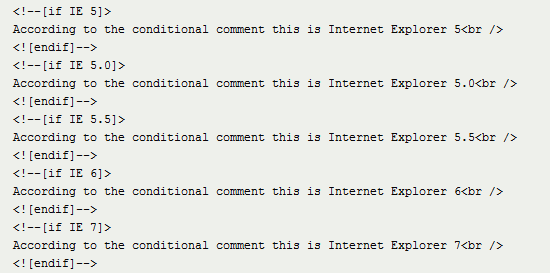100 Exceedingly Useful CSS Tips and Tricks
You can never have too much of a good thing–and two good things we rely on in our work are tips and tricks. Nuggets of information, presented clearly and succinctly, help us build solutions and learn best practices. In a previous article, we shared a jam-packed list of 250 quick web design tips. It seems only right to continue the trend by showcasing 100 fresh–and hopefully useful–CSS tips and tricks.
General
Not everything in this list was easy to categorize. All of the tips that are relevant and worthy of mention but don’t cleanly fit into a category are listed in this section.
 Conditional comments have been a godsend for resolving Internet Explorer inconsistencies.
Conditional comments have been a godsend for resolving Internet Explorer inconsistencies.
1 It’s critical when working with CSS to be aware of the various properties at your disposal and how to use them correctly.
2 Using a good editor can increase productivity. Syntax highlighting and auto-complete functionality (plus validation and code references) make life easy. Check outNotepad++, Coda, and don’t discount Dreamweaver CS’s code view until you try it.
3 In many ways, experimentation is the mother of innovation. Give yourself time to play; trial and error will help you learn and memorize techniques quickly. Check out these CSS3 experiments, for inspiration: How to Create Inset Typography with CSS3,Semantic CSS3 Lightboxes, and 10 Interesting CSS3 Experiments and Demos.
4 Enable Gzip compression server-side whenever possible; it shrinks the size of files such as CSS and JavaScript without removing any of the content.
5 Caching will conserve bandwidth for visitors and account for much faster speeds. Take advantage of it whenever you can. Learn about optimizing browser caching.
6 Whitespace is important for CSS readability. Using whitespace to format your stylesheet adds bytes to the file size, but it’s made up for in increased readability.
7 Avoid using inline code (in either elements using the
style attribute or in the HTML document within